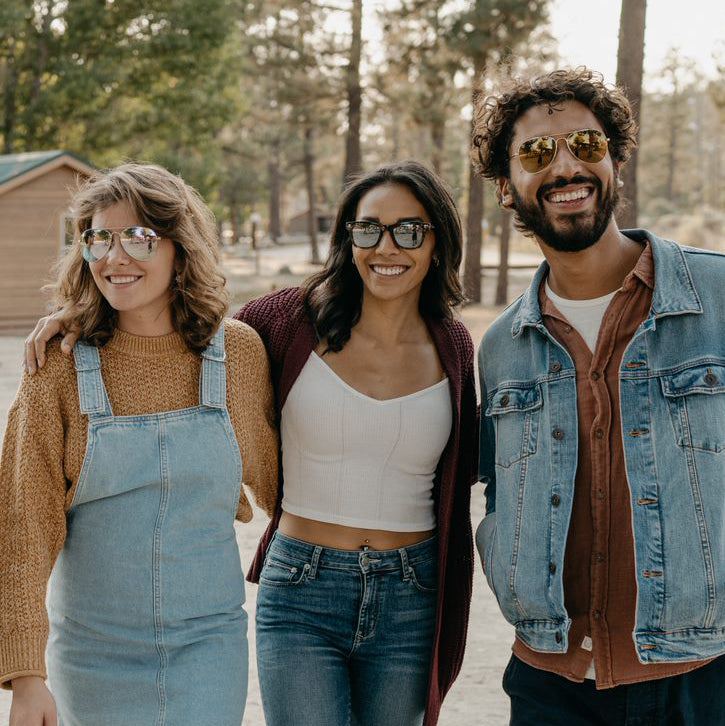
Adobe Stock
The Beginner's Guide to Understanding Wine
April 25, 2019
Love wine and keen to learn more about the wonderful world of fermented grape juice? At first glance, it can seem a bit overwhelming. There's a lot to wine. Everything from the grape variety to the soils, climate, and decisions made by the winemaker has an effect on what you end up buying at your local wine store. To truly understand the ins and outs of wine can take years but I've broken down a few of the basics I picked up during my years working as a sommelier so you can pick up your glass with more confidence.
How to Taste Wine
There are a few major components that dictate how a wine tastes. Through practice, you'll learn how to pick these out but remember, like shooting a three-pointer, it takes time to master. Here are the basic terms and concepts you'll need to know.
- While it may not sound like a great thing, acidity in wine is absolutely key. It's one of the most important elements for pairing food and wine and helps refresh your palate between each sip. Acidity is mostly dependent on the grape variety and climate in which the grapes were grown.
- Your typical table wine is between eight and 14 percent alcohol with most falling around 12 to 14% ABV. The alcohol level is important to consider if you're trying to pair your wine with food (high alcohol can make pairing a bit trickier) or if you have an early morning meeting at work.
- Body or the “weight” of wine on your palate. This usually corresponds to the alcohol level.
- Tannins, which almost exclusively applies to red wines, are compounds found in the skins, seeds, and stems of grapes. In wine, you'll experience it as a sort of mouth-drying astringency.
- Most wines are dry (i.e. not sweet), but some styles are off-dry (slightly sweet), and of course, there are plenty of proper dessert wines out there. While plenty of wines have ripe fruit flavors, the majority of these will still fall into the dry camp. Discover the difference by tasting a Napa Sauvignon Blanc (a dry wine with ripe fruit flavors) then a sweet Riesling (try an auslese Riesling from Germany).
- The aromas and flavors inherent to the grape variety/varieties in the wine are the most upfront elements wine drinkers will notice. These are descriptors which include fruit, florals, herbs, and earth, to name a few.
- The final thing to note is winemaking decisions like the use of new oak, fining and filtering, and aging. The influence of new oak barrels on wine is the most obvious—it tends to impart notes of vanilla, toast, and spice to a wine.
You may have heard of terroir. This French word essentially translates to “a sense of place.” It refers to how soil, climate, elevation, and aspect all affect how a wine tastes in your glass.
It's a lot, we know. The best way to learn how to taste is to do side by side comparisons of extremes. Taste a bone dry Chablis next to an off-dry German Riesling. Try a red Burgundy and compare it to an Australian Shiraz. Sip on a Pinot Grigio, then try a Torrontes. You get the idea. By tasting dramatically different styles, you'll start getting a handle on dry versus sweet, high acid versus low acid, light-bodied versus full-bodied and so on.
Tips for Buying Wine
One trick you'll want to have in your back pocket is how to read a wine label. A wine label should tell you a few keys bits of information. The producer or winery, the region or appellation the wine is from, the vintage (aka the year) it was produced, as well as the alcohol content. A label may or may not say the grape varieties that went into the wine. It's become far more common in recent years for producers to pop the names of the grapes on the label, particularly in the New World (everywhere that isn't Europe), but Old World (read: European) winemakers are following suit.
The Most Important Thing to Remember
Keep in mind you don't need to spend mega bucks to pick up a good bottle of wine. Skip the bottom shelf. Typically speaking, you can buy a perfectly delicious wine between $12-$20. If you feel a bit lost at sea perusing shelf after shelf of bottles, don't be afraid to ask for help. Your local wine shop expert or sommelier will be able to help you navigate their selection. If you're able to mention a few producers, styles, or regions you like, that will go a long way to enabling them to send you home with a bottle you'll love.
The biggest takeaway here is not to overthink things. Wine is about taking pleasure in the contents of your glass and the company you're with. Once it stops being fun, you're doing it wrong. At the end of the day, wine is food and it's meant for enjoyment.
Again, learning how to taste wine and recognize the different flavors in your glass takes time. If you want to build up this skill, go to wine tastings, sip on flights at your local wine bar, grab a few bottles and some friends, and compare notes while you drink up (in moderation, of course). By doing these types of tastings you'll develop a mental reference of how different grape varieties and wines from different regions taste. One thing's for sure—you'll have plenty of fun in the process!
Written by Camille Berry for Knockaround.





Exploring Southern California on a Budget
New Frame Style: Seventy Nines